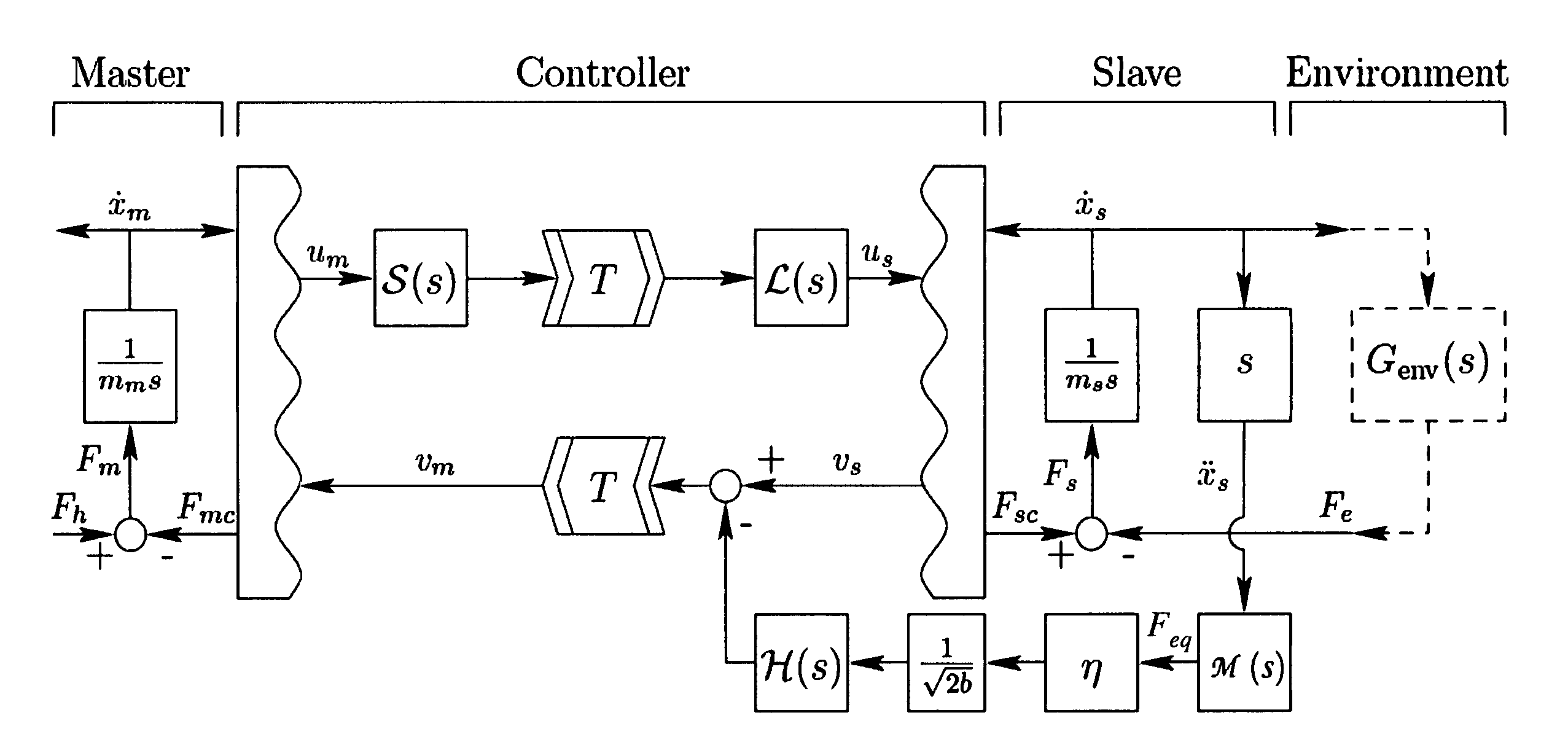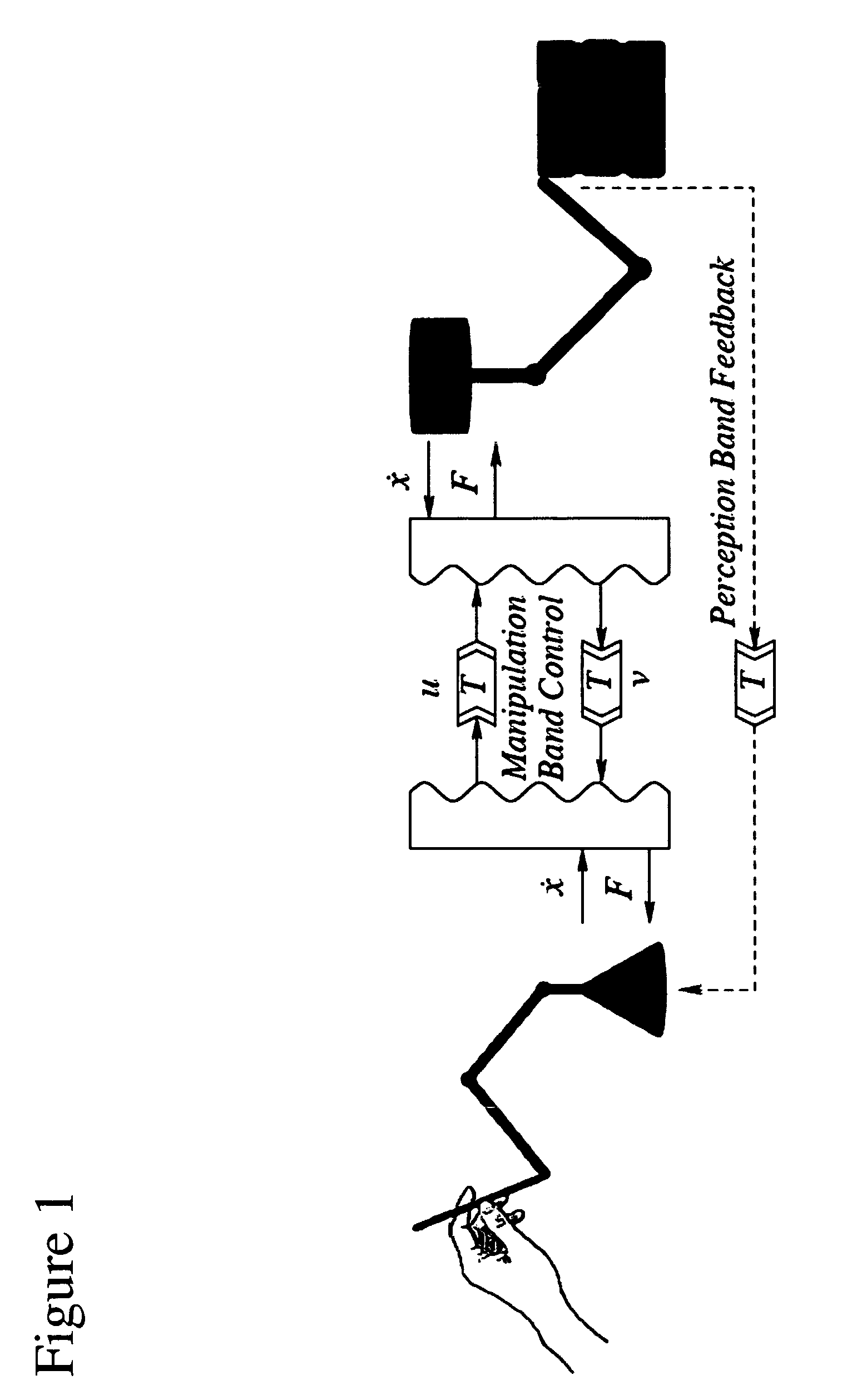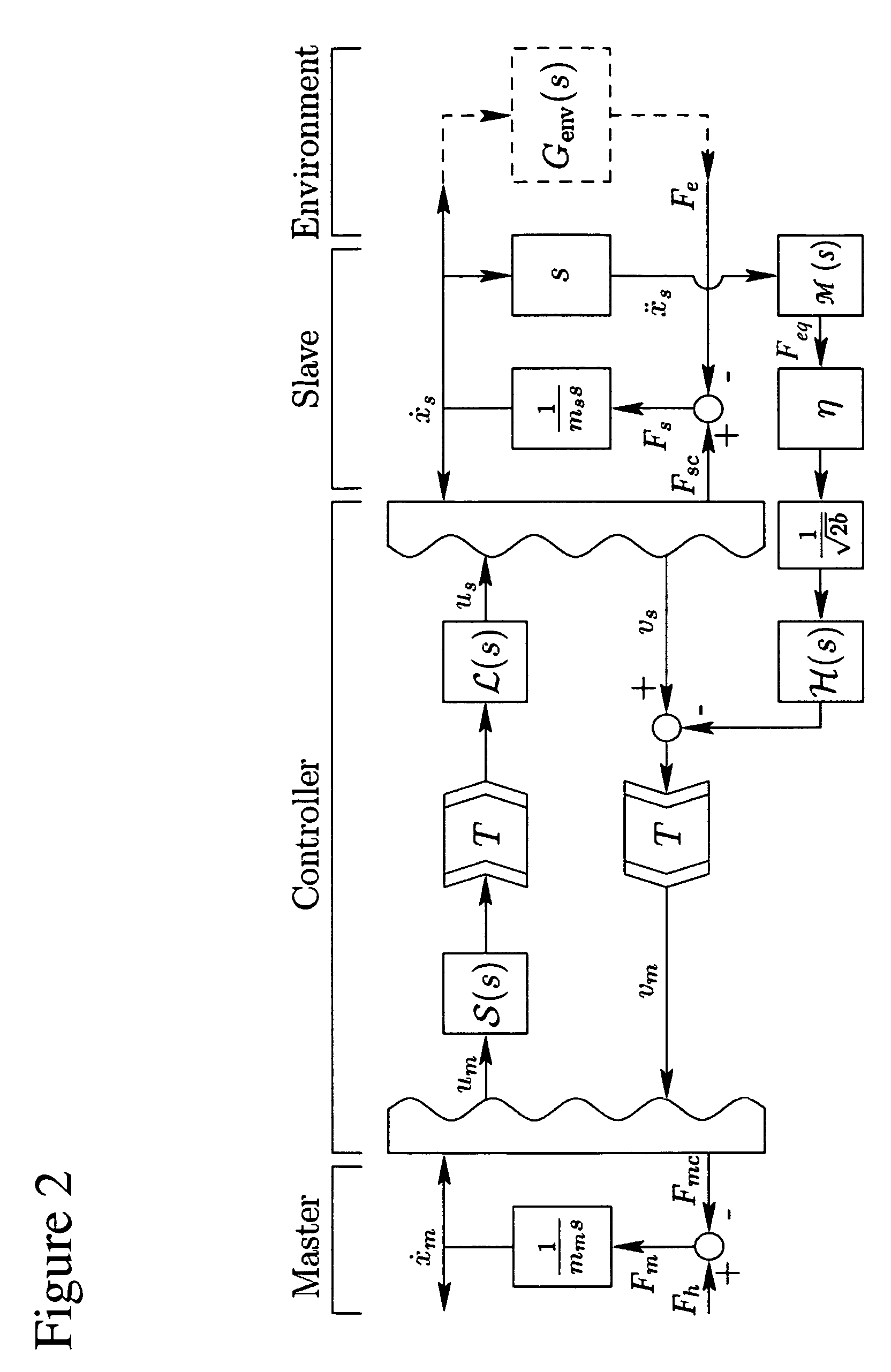High frequency feedback in telerobotics
a high-frequency feedback and telerobotic technology, applied in the field of telerobotics, can solve the problems of using slave tracking errors, sidestepping stability issues, and unable to meet the needs of telerobotics, and achieve the effect of maintaining contact stability
- Summary
- Abstract
- Description
- Claims
- Application Information
AI Technical Summary
Benefits of technology
Problems solved by technology
Method used
Image
Examples
Embodiment Construction
Human Perception and Sensor Selection
[0056]As humans, we interact with our environment in a very asymmetric manner. While the bandwidth of human movements is limited to under 10 Hz, forces from DC to 1 kHz are important for our perception of the environment. We intentionally use motions such as tapping, stroking, and scratching that elicit high frequency cues for perceiving properties such as hardness and texture.
[0057]We can thus separate interactions with an environment into two discrete frequency bands as shown in FIG. 1; i.e. a manipulation band and a perception band. The manipulation band includes the low frequency range up to approximately 10 Hz. It is fundamentally bidirectional, containing both motion (position and velocity) and force signals. The perception band is unidirectional and includes frequencies above 10 Hz up to about 1 KHz.
Augmented Wave Controller
[0058]Recognizing the inherent stability of a low bandwidth passive controller and the perceptual importance of high ...
PUM
 Login to View More
Login to View More Abstract
Description
Claims
Application Information
 Login to View More
Login to View More - R&D
- Intellectual Property
- Life Sciences
- Materials
- Tech Scout
- Unparalleled Data Quality
- Higher Quality Content
- 60% Fewer Hallucinations
Browse by: Latest US Patents, China's latest patents, Technical Efficacy Thesaurus, Application Domain, Technology Topic, Popular Technical Reports.
© 2025 PatSnap. All rights reserved.Legal|Privacy policy|Modern Slavery Act Transparency Statement|Sitemap|About US| Contact US: help@patsnap.com



